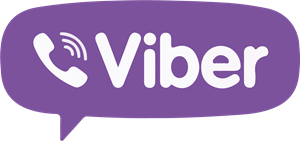The Importance of Hearing Protection in Industrial Settings: A Comprehensive Guide

Introduction:
In industrial environments, the constant exposure to loud noise from machinery and equipment poses a significant risk to workers' hearing health.
Noise-induced hearing loss (NIHL) is a preventable yet prevalent occupational hazard that can have long-lasting effects on individuals' quality of life.
This blog post aims to shed light on the importance of hearing protection in industrial settings, providing a comprehensive guide to safeguarding workers' hearing and promoting a safer workplace.
Understanding Noise-Induced Hearing Loss (NIHL):
Noise-induced hearing loss occurs when the delicate structures within the ear are damaged due to prolonged exposure to high levels of noise.
The excessive noise disrupts the functioning of hair cells in the inner ear, leading to irreversible hearing loss. Additionally, loud noise can cause tinnitus, a persistent ringing or buzzing sound in the ears.
It is crucial to understand the causes and effects of NIHL to appreciate the importance of implementing effective hearing protection measures in industrial settings.
Occupational risk factors:
Certain industries and occupations are more prone to noise-induced hearing loss. Construction sites, manufacturing facilities, airports, and heavy machinery operations are just a few examples.
Workers engaged in these environments are exposed to noise levels that surpass safe thresholds, making them vulnerable to hearing damage. By recognizing these risk factors, employers can prioritize hearing protection initiatives for their employees.
Assessing Noise Levels in the Workplace:
Conducting regular noise assessments is vital for identifying areas and processes in the workplace that have excessive noise levels. Noise monitoring can be performed using sound level meters or dosimeters, which measure the intensity and duration of noise exposure.
By evaluating noise levels, employers can determine if noise control measures are required, and if so, which areas or equipment need immediate attention. Implementing engineering controls such as sound barriers or acoustical insulation can significantly reduce noise levels and protect workers' hearing.
Types of Hearing Protection:
Earplugs:
Earplugs are a popular form of hearing protection that come in various types to suit different needs. Foam earplugs are disposable and provide a snug fit when rolled and inserted into the ear canal.
They are affordable and suitable for short-term use. Reusable earplugs made of silicone or thermoplastic elastomer (TPE) are a more durable option that can be washed and reused multiple times.
Custom-molded earplugs, created based on an individual's ear canal impressions, offer a superior fit and maximum comfort.
Earmuffs:
Earmuffs are another effective option for hearing protection, particularly in environments with high noise levels.
They consist of ear cups filled with sound-attenuating materials and cushioned padding to create a seal around the ears. Earmuffs provide a high level of noise reduction and are easy to put on and remove.
They are particularly useful for workers who frequently move in and out of noisy areas or wear other forms of personal protective equipment (PPE).
Implementing Hearing Conservation Programs:
Workplace regulations and standards:
Government bodies and organizations, such as the Occupational Safety and Health Administration (OSHA), provide guidelines and regulations for hearing protection in industrial settings.
Employers must familiarize themselves with these standards and ensure compliance to protect their employees from noise-induced hearing loss.
By adhering to these regulations, employers can create a safer work environment and avoid potential legal consequences.
Developing a hearing conservation program:
Establishing a comprehensive hearing conservation program is essential to mitigate the risks associated with noise exposure.
This program should include elements such as noise control measures, regular noise assessments, hearing protection devices, employee training and education, and routine hearing screenings.
By integrating these components into the workplace, employers can effectively manage and reduce noise levels, raise awareness about hearing health, and promote a culture of safety.
Promoting Awareness and Education:
Employee training and education:
A crucial aspect of any successful hearing protection program is providing adequate training and education to employees.
This includes raising awareness about the risks of noise exposure, the proper use of hearing protection devices, and the importance of regular hearing screenings.
Employers should ensure that workers understand the potential consequences of not using hearing protection and provide clear instructions on the correct usage and maintenance of hearing protection devices.
Raising awareness of NIHL:
To foster a culture of hearing protection, employers can organize awareness campaigns, distribute informational materials, and conduct training sessions on hearing conservation.
Encouraging active participation from employees through incentives and recognition can further enhance engagement and compliance.
Celebrating achievements in hearing conservation, such as significant noise reduction or successful implementation of control measures, can motivate employees and reinforce the importance of protecting their hearing.
Conclusion:
Protecting workers' hearing from industrial machinery is crucial for their long-term well-being.
By understanding the risks of noise-induced hearing loss, implementing effective hearing protection measures, and promoting awareness and education, employers can create a safer workplace environment and prioritize the health and safety of their employees.
Remember, hearing protection is not just a legal obligation; it is an investment in the future well-being of the workforce.
By proactively addressing noise exposure and fostering a culture of hearing protection, industrial settings can become safer, healthier, and more conducive to overall employee well-being.
Buckle up, my friends, because Predrag is about to take you on a wild ride through the kaleidoscope of wellness. From rocky health tactics and kale to kettlebells, smoothies to squats, and avocados to abs of steel, they will empower you to live your healthiest, happiest, and funniest life.

